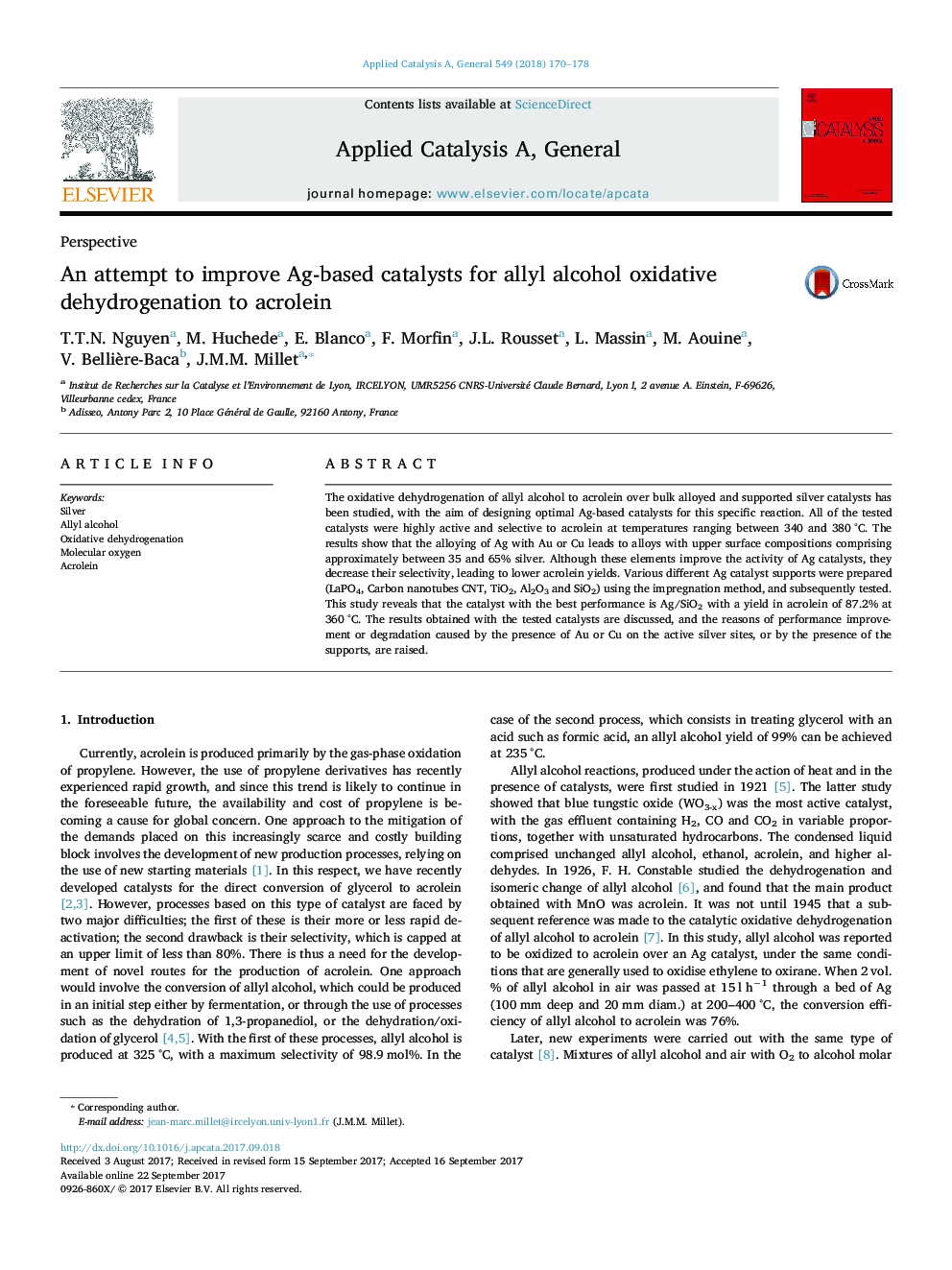| کد مقاله | کد نشریه | سال انتشار | مقاله انگلیسی | نسخه تمام متن |
|---|---|---|---|---|
| 6453209 | 1418497 | 2018 | 9 صفحه PDF | دانلود رایگان |

- Alloying with copper or gold does not improved the catalytic properties of Ag in oxidative dehydrogenation of allyl alcohol.
- Screening of various oxidic and non-oxidic supports showed that Ag/SiO2 is the best catalysts for the reaction.
- Optimized catalytic reaction conditions allowed to reach yield in acrolein of 87.2% at 360 °C.
The oxidative dehydrogenation of allyl alcohol to acrolein over bulk alloyed and supported silver catalysts has been studied, with the aim of designing optimal Ag-based catalysts for this specific reaction. All of the tested catalysts were highly active and selective to acrolein at temperatures ranging between 340 and 380 °C. The results show that the alloying of Ag with Au or Cu leads to alloys with upper surface compositions comprising approximately between 35 and 65% silver. Although these elements improve the activity of Ag catalysts, they decrease their selectivity, leading to lower acrolein yields. Various different Ag catalyst supports were prepared (LaPO4, Carbon nanotubes CNT, TiO2, Al2O3 and SiO2) using the impregnation method, and subsequently tested. This study reveals that the catalyst with the best performance is Ag/SiO2 with a yield in acrolein of 87.2% at 360 °C. The results obtained with the tested catalysts are discussed, and the reasons of performance improvement or degradation caused by the presence of Au or Cu on the active silver sites, or by the presence of the supports, are raised.
72
Journal: Applied Catalysis A: General - Volume 549, 5 January 2018, Pages 170-178